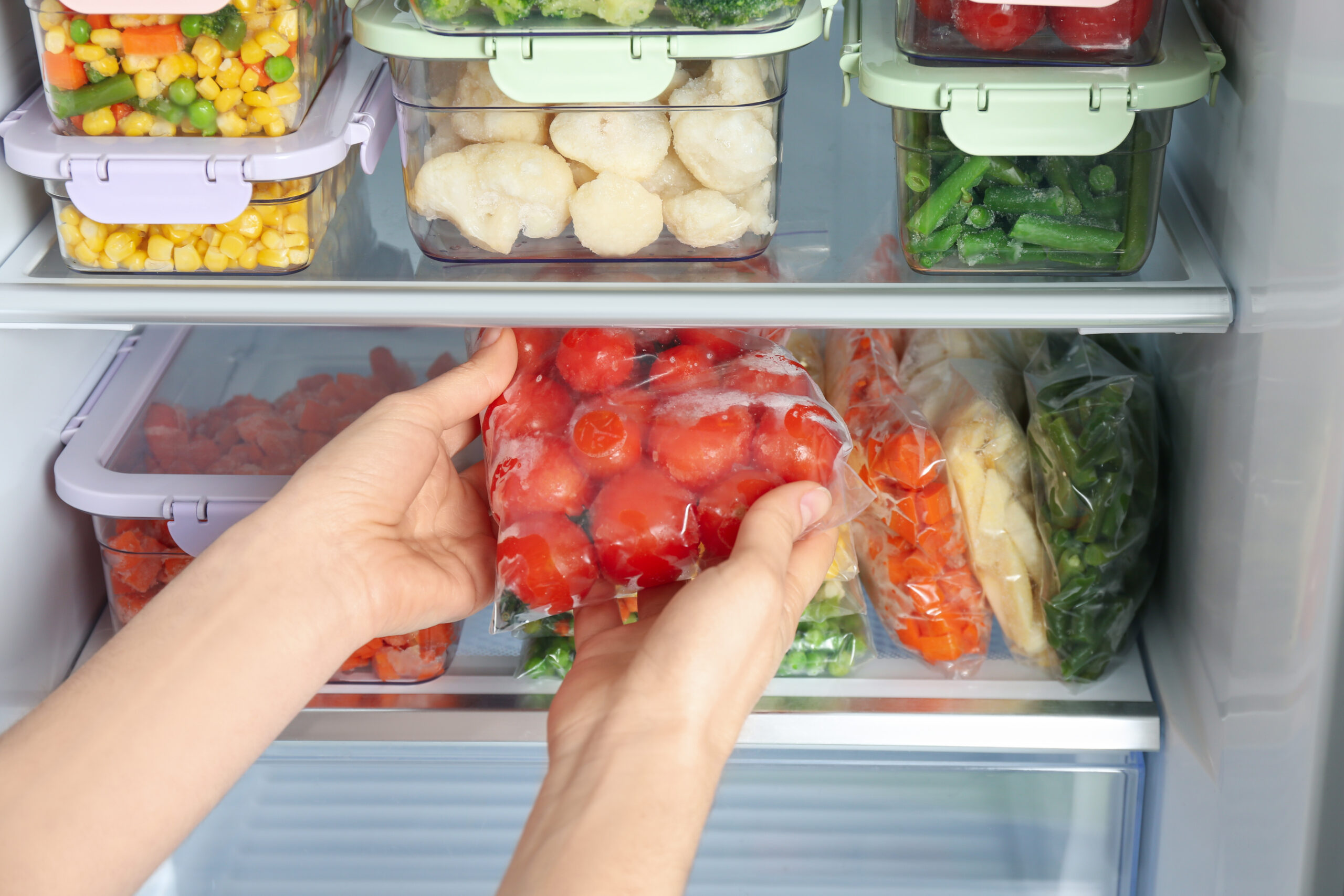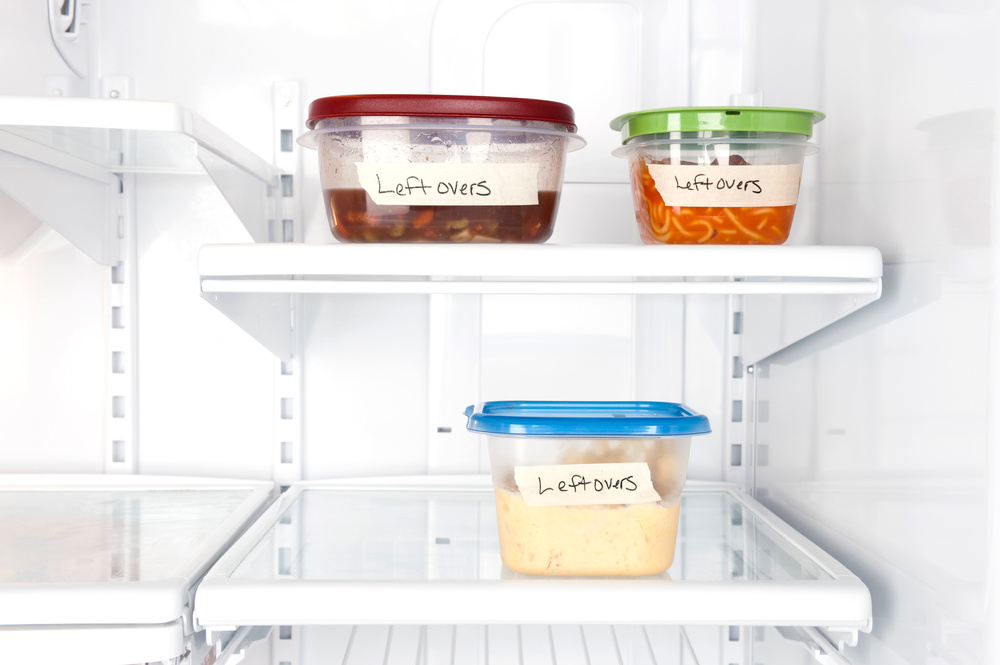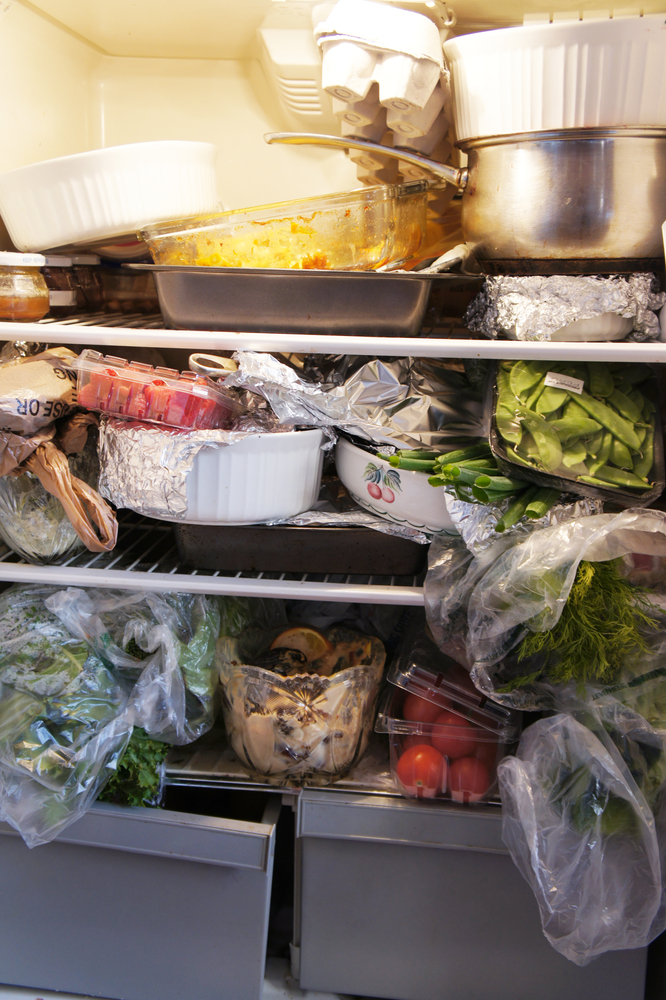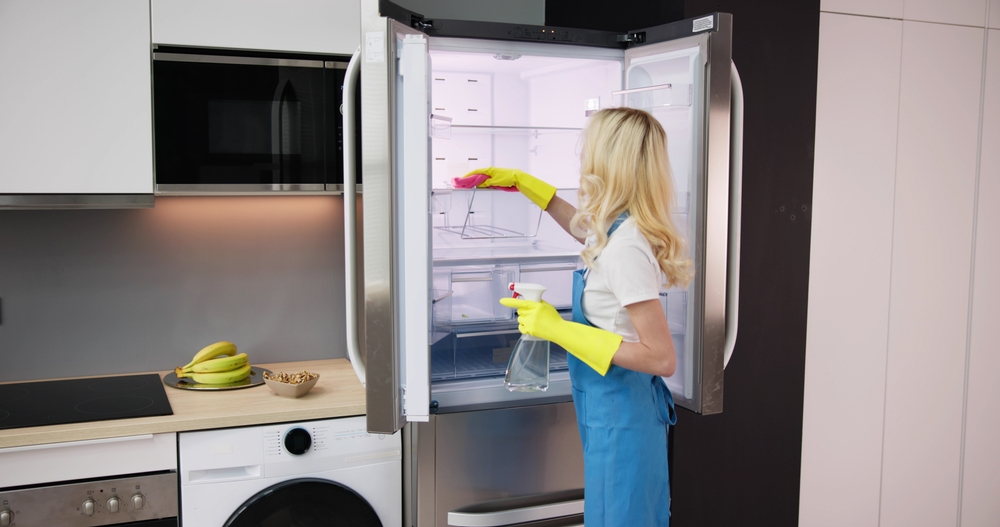Keeping your fridge in order can really cut down on food waste and make life easier. When everything has its place, it’s quicker to find what you need, and less food ends up forgotten and spoiled. A well-organized fridge also means you’re more likely to use what you have before it goes bad, saving both money and trips to the store. With a few simple adjustments, you can keep your food fresh for longer and avoid throwing out perfectly good groceries. Here’s how you can start organizing your fridge to make the most of your food!
Contents
- 1 Use Clear Containers for Leftovers
- 2 Create a “Use Me First” Section
- 3 Adjust Shelves for Better Fit
- 4 Use Stackable Bins for Better Organization
- 5 Organize Produce by Humidity
- 6 Store Condiments in the Door
- 7 Label Everything
- 8 Rotate Food Using the FIFO Method
- 9 Store Fruits and Vegetables Separately
- 10 Keep a Regular Inventory
- 11 Maintain the Right Temperature
- 12 Freeze Leftovers to Extend Shelf Life
- 13 Separate Ethylene-Producing Foods
- 14 Organize by Meal Type
- 15 Avoid Overcrowding
- 16 Clean the Fridge Regularly
- 17 More From RetailShout
- 18 14 Delicious Aldi Desserts You Need to Try
- 19 18 Best Dollar Tree Toys and Games for Kids
Use Clear Containers for Leftovers

Using clear containers helps you easily spot what’s inside, preventing forgotten leftovers from spoiling. Clear visibility encourages you to use items before they go bad. Label each container with the date it was stored to track freshness. This method helps eliminate the mystery of how long food has been sitting in the fridge. By reducing waste, you save money and time spent grocery shopping. It also helps keep your fridge organized, making it easy to plan meals around what’s available.
Create a “Use Me First” Section

Designating a specific section in your fridge for food that needs to be consumed first is key to minimizing waste. Place perishable items, such as dairy or leftovers, in a visible spot. This system helps you quickly identify what should be used up in your next meal. By keeping these foods in one place, you avoid them getting pushed to the back and forgotten. Eye-level placement increases visibility and promotes usage. It’s a great way to reduce spoilage and make meal planning more efficient.
Adjust Shelves for Better Fit

Maximizing the available space in your fridge by adjusting shelves ensures that all items fit properly. This customization reduces overcrowding and improves airflow, which helps maintain the ideal temperature for different food types. Larger containers can be stored efficiently by raising or lowering shelves. Avoid stacking items too high, as this blocks airflow and can lead to uneven cooling. With better shelf organization, your fridge becomes easier to navigate, and food lasts longer. This simple tip can save both time and food.
Use Stackable Bins for Better Organization

Stackable containers are excellent for creating vertical storage, especially for small items like jars and condiments. They keep food items from being forgotten in the back, ensuring everything is visible. These bins also allow you to categorize food by type, such as separating fruits from veggies or snacks. Stackable bins help you make the most of your fridge’s height, preventing overcrowding. By keeping items accessible, they help prevent food from being pushed to the back and going bad unnoticed.
Organize Produce by Humidity

Your fridge’s crisper drawers are designed to maintain specific humidity levels, so use them wisely. High-humidity drawers are perfect for leafy greens and vegetables that wilt, like spinach or broccoli. Low-humidity drawers are better for fruits and veggies that rot quickly, such as apples or mushrooms. By separating produce according to its storage needs, you can extend its freshness. Using the correct drawer also prevents moisture buildup, which can cause items to spoil faster. This tip ensures that fruits and vegetables last longer and reduces overall food waste.
Store Condiments in the Door

The fridge door is the warmest part of the appliance, making it ideal for condiments rather than perishable items. Sauces, salad dressings, and pickles are less sensitive to temperature fluctuations, so they won’t spoil as quickly in the door. Storing items like milk or eggs in the door, however, can lead to quicker spoilage. By reserving this space for less sensitive items, you keep your fridge better organized. This also frees up prime shelf space for more temperature-sensitive foods, helping to prevent waste.
Label Everything

Labeling your containers with the contents and the date they were stored helps prevent food from going bad unnoticed. This step removes any guesswork about the age of leftovers and other perishables. It’s especially useful for bulk-prepped meals or when you’ve repackaged store-bought items. Labeling also helps you rotate items more efficiently, ensuring that older food gets used first. By staying on top of expiration dates, you reduce the risk of food waste and spoilage.
Rotate Food Using the FIFO Method

The “First In, First Out” (FIFO) method encourages you to consume older items before newer ones. When restocking your fridge, move older food to the front so it’s used up first. This practice reduces the chances of items being forgotten at the back. It’s especially helpful for perishable goods like dairy, meat, and produce. By regularly rotating items, you minimize waste and ensure fresher meals. This method not only keeps your fridge organized but also extends the life of your groceries.
Store Fruits and Vegetables Separately

Fruits and vegetables should be stored separately to avoid premature spoilage. Many fruits, such as apples and bananas, release ethylene gas, which can speed up the ripening of nearby veggies. Use your fridge’s crisper drawers to separate fruits from vegetables. Keeping them apart helps control the environment and prevents over-ripening. This method also allows you to optimize the humidity levels for each group. Proper separation ensures both fruits and vegetables last longer, reducing waste.
Keep a Regular Inventory

Regularly checking your fridge’s contents helps you stay aware of what you have and what needs to be used. Make a habit of scanning for foods nearing their expiration or wilting stage. By staying on top of your inventory, you can plan meals around what’s left in the fridge. This reduces the chances of spoilage and unnecessary waste. Keeping a regular inventory also helps avoid overbuying during grocery trips, as you’ll know exactly what needs replenishing.
Maintain the Right Temperature

Maintaining the right fridge temperature is crucial for food safety and freshness. Set your fridge between 35°F and 40°F to ensure that perishables like dairy and meat stay fresh without freezing. Invest in a fridge thermometer if your appliance doesn’t have a reliable built-in gauge. Keeping your fridge at the optimal temperature prevents spoilage and extends the shelf life of your groceries. It also minimizes energy usage, ensuring your fridge runs efficiently while preserving food quality.
Freeze Leftovers to Extend Shelf Life

Freezing is a great way to extend the shelf life of food, especially leftovers or bulk-prepped meals. Portion meals into freezer-safe containers and label them with the date. This method ensures that food doesn’t sit in the fridge too long and go to waste. You can also freeze produce that’s nearing its expiration for use in smoothies or soups. By using your freezer strategically, you reduce waste and have quick meal options ready when needed.
Separate Ethylene-Producing Foods

Some fruits, like apples and bananas, release ethylene gas, which can cause nearby produce to spoil faster. To prevent this, store ethylene-producing fruits separately from sensitive veggies. Use a loosely tied bag to trap ethylene, keeping it away from vegetables like leafy greens and cucumbers. This simple step helps extend the life of both your fruits and veggies. Proper storage prevents waste and ensures you get the most out of your groceries.
Organize by Meal Type

Grouping food by meal type—such as breakfast, lunch, or snacks—can streamline meal prep and reduce waste. Place items you regularly use for each meal in one designated area, making it easier to find what you need. This method also helps you avoid overbuying, as you’ll know exactly what’s available. By keeping everything organized, you reduce the chances of forgetting items and letting them spoil. It’s a practical way to make meal prep quicker and waste-free.
Avoid Overcrowding

Overcrowding your fridge limits airflow, leading to uneven cooling and quicker spoilage. By keeping items spread out and allowing air to circulate, you maintain a consistent temperature throughout the fridge. This helps prevent hot spots that can cause food to spoil faster. Make sure your fridge is organized in a way that leaves space between items. Keeping it uncluttered ensures that all food stays fresh longer, minimizing waste.
Clean the Fridge Regularly

A clean fridge is key to reducing food waste and keeping your food fresh. Set a schedule to deep clean the fridge every few weeks, removing expired or spoiled items. Wipe down shelves, drawers, and seals to remove any residue or bacteria. A clean environment promotes longer-lasting food and prevents contamination. Regular cleaning also helps you stay on top of your inventory, making it easier to plan meals around what’s available.
This article originally appeared on RetailShout.
More From RetailShout
13 Must-Try Snack Combos from Trader Joe’s for Every Craving

Do you have a go-to snack combo? If not, Trader Joe’s is about to fix that with some seriously tasty pairings. Whether you’re craving something sweet, salty, or a bit of both, these must-try combos are about to become your new snack obsession. With endless irresistible pairings, these must-try combos will satisfy every craving and keep you coming back for more! Read More
14 Delicious Aldi Desserts You Need to Try

If you’re like me and love discovering new treats to satisfy your sweet tooth, Aldi’s dessert aisle is practically a goldmine. With a lineup of irresistible treats that are as affordable as they are delicious, you won’t need to search far for your next sugar fix. Here are some of the must-try sweet treats Aldi has to offer. Read More.
18 Best Dollar Tree Toys and Games for Kids

Finding affordable and fun toys for kids doesn’t have to be a challenge, especially when Dollar Tree has such a variety of options that won’t break the bank. Kids can have just as much fun with these budget-friendly toys as they do with the more expensive ones, and parents can feel good about the savings. Here’s a list of some of the best toys and games you can grab from Dollar Tree to keep the little ones happy and engaged. Read More.






